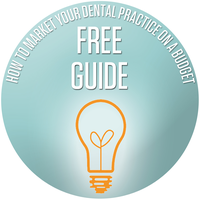
Women have been involved in dentistry for centuries. The field has existed since the earliest days of human civilization and first became prominent in the 1700s. By the mid-1800s, the first women were licensed to practice.
In the 19th century, women began making significant strides in the field. This paved the way for those who came after them, including today's female dental professionals.
As we celebrate International Women's Day and Women's History Month, it is essential to honor the accomplishments of the trailblazing women who have paved the way for future generations. So, we are examining women's history in the dental field and looking at where things are going.
Key Takeaways:
- Women have been involved in the field of dentistry for centuries.
- The first women were licensed to practice dentistry in the mid-1800s.
- Women faced significant hurdles in the dental profession. They were denied admission to dental schools and relegated to different training programs.
- Women have made remarkable strides in the field. They include being the first to graduate from dental school and the first African-American dentist.
- The National Association of Dental Examiners recognized women as dentists only in 1913. In the 1950s, they made up only 3% of all dentists in the United States
- The percentage of female dental school graduates has increased over the decades. Nearly 50% of dental school graduates today are female.
18th century
In 1852, Amalia Assur became the first female dentist in Sweden. However, dentistry was not legally open to women at that time. So, the Royal Board of Health granted her special permission to practice independently. It wasn't until 1861 that Sweden passed a law allowing women to practice dentistry.
Following her, Emeline Roberts Jones was the first woman to be licensed as a dentist in the United States. This occurred in 1855 and paved the way for future generations of women to enter the field.
19th century
Lucy Beaman Hobbs Taylor was the first woman to graduate from dental school. However, she had to overcome several obstacles to achieve this feat. Initially, she was denied admission to the Ohio College of Dentistry.
However, she did not let this discourage her. She found a mentor instead. Lucy taught herself the principles of dental care and eventually became proficient enough to open her practice in Iowa. Later, she was allowed to enroll in dental school and graduated in 1866.
Following this, Rosalie Fougelberg became the first woman to work as a dentist in 1866, after the law was introduced. Margarita Chorné y Salazar became the first female dentist in Mexico in 1886.
Ida Gray Nelson was the first African-American dentist. She became interested in dentistry while working part-time in a dental office. This experience helped her pass the entrance exam for her dental degree. After receiving her degree at the University of Michigan in 1890, she moved to her hometown of Cincinnati, Ohio, to open her practice.
Despite these early successes, women faced significant hurdles in the dental profession. Many dental schools refused to admit them. And those that did often relegated them to inferior training programs. Schools also denied women access to the same clinical experiences as their male counterparts.
20th century
In dentistry, women had to wait until the 20th century to make real progress. The National Association of Dental Examiners recognized women as dentists only in 1913. In the 1950s, they comprised only 3% of all dentists in the United States.
In the early 1900s, some dental schools allowed female students, while others refused to accept them. At the time, only a few women graduated from dental schools each year. Grace Rogers Spalding and Gillette Hayden formed the American Academy of Periodontology in 1913. Spalding became the academy's first female president. Plus, she left an impression on periodontology practices as an editor of the Journal of Periodontology for 20 years. She emphasized the importance of gums and supporting tooth structures, not just teeth.
The American Association of Women Dentists was formed in 1921. It provided a professional group for female dentists to connect.
Female dentists offered their skills to the U.S. Army during World War II but were denied. Some, like Sara G. Krout, joined volunteer emergency services. The wartime economy created job opportunities for women in heavy industry and other roles. This shift allowed women to fill in for the men who joined the armed forces. Many historians consider women's presence in the workforce during World War II to be a critical factor in the following changes.
In the 1960s, the women's liberation movement aimed to address inequality faced by women in legal and social contexts. The Civil Rights Act of 1964 helped make professional fields more accessible to women. It prohibited discrimination based on gender. Women began to pursue higher education and careers. These pioneers replaced the social concepts of women as secondary earners with a two-income family model.
The passing of the Pregnancy Discrimination Act of 1978 protected pregnant women from hiring discrimination. Like many fields, dentistry saw changes in demographic breakdowns that coincide with these changes.
21st century
Notably, the percentage of female dental school graduates has increased over the years. In 1968, only 1% of graduates were female. Meanwhile, today, nearly 50% of dental school graduates are female.
Currently, women make up approximately 30% of all dentists in the United States, and this percentage is expected to grow. Women have contributed immensely to the world of dentistry, from revolutionary research to innovative clinical techniques. As of 2020, 201,117 dentists were working in the United States. Only 32% were female. However, this figure is expected to rise as more women graduate from dental school and join the workforce. Women account for 60% of dentists under 44, indicating that this trend will continue.
The number of female dentists is increasing. Women are also becoming leaders in dental education and professional associations.
In 2010, there were 111 female assistant deans in dental schools. That’s nearly seven times more than the 16 assistant deans in 1990. Kathleen T. O'Loughlin became the first female president of the ADA in 2009. Moreover, women hold a considerable number of oral health-related jobs beyond dentistry. For instance, 98% of registered dental hygienists in the United States are female. Women also account for 97% of dental office managers and 93% of dental assistants. Half of dental laboratory technicians and medical appliance technicians are female.
We are honored to celebrate the women who have made significant contributions to the field of dentistry and continue to do so now and in the future.


